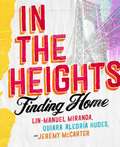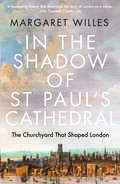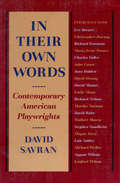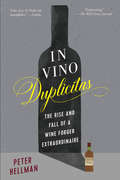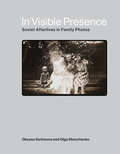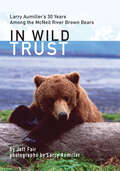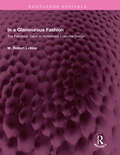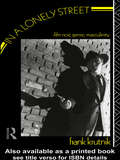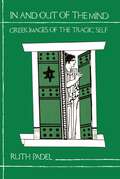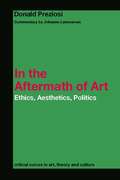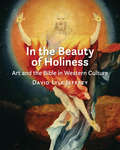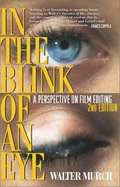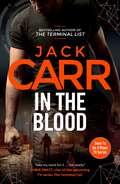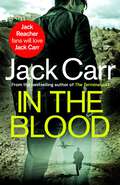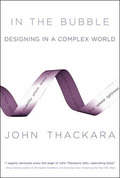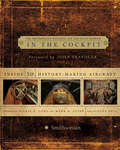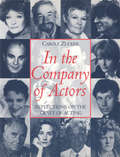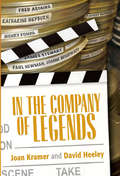- Table View
- List View
In The Heights: Finding Home **The origin story behind the feelgood film of the summer**
by Lin-Manuel Miranda Jeremy McCarter Quiara Alegria HudesLin-Manuel Miranda's new book gives readers an extraordinary inside look at In the Heights, his breakout Broadway debut, written with Quiara Alegría Hudes, now a Hollywood blockbuster.WHAT FANS ARE SAYING... "This book is so beautiful I want to cry." ~ "I genuinely think I've needed this for years." ~ "Reading this book made my love for both the musical and movie versions of In the Heights grow even more."In 2008, In the Heights, a new musical from up-and-coming young artists, electrified Broadway. The show's vibrant mix of Latin music and hip-hop captured life in Washington Heights, the Latino neighborhood in upper Manhattan. It won four Tony Awards and became an international hit, delighting audiences around the world. For the film version, director Jon M. Chu (Crazy Rich Asians) brought the story home, filming its spectacular dance numbers on location in Washington Heights. That's where Usnavi, Nina, and their neighbors chase their dreams and ask a universal question: Where do I belong?In the Heights: Finding Home reunites Miranda with Jeremy McCarter, co-author of Hamilton: The Revolution, and Quiara Alegría Hudes, the Pulitzer Prize-winning librettist of the Broadway musical and screenwriter of the film. They do more than trace the making of an unlikely Broadway smash and a major motion picture: They give readers an intimate look at the decades-long creative life of In the Heights.Like Hamilton: The Revolution, the book offers untold stories, perceptive essays, and the lyrics to Miranda's songs-complete with his funny, heartfelt annotations. It also features newly commissioned portraits and never-before-seen photos from backstage, the movie set, and productions around the world.This is the story of characters who search for a home-and the artists who created one.
In The Shadow of St. Paul's Cathedral: The Churchyard that Shaped London
by Margaret WillesThe extraordinary story of St. Paul’s Churchyard—the area of London that was a center of social and intellectual life for more than a millennium St. Paul’s Cathedral stands at the heart of London, an enduring symbol of the city. Less well known is the neighborhood at its base that hummed with life for over a thousand years, becoming a theater for debate and protest, knowledge and gossip. For the first time Margaret Willes tells the full story of the area. She explores the dramatic religious debates at Paul’s Cross, the bookshops where Shakespeare came in search of inspiration, and the theater where boy actors performed plays by leading dramatists. After the Great Fire of 1666, the Churchyard became the center of the English literary world, its bookshops nestling among establishments offering luxury goods. This remarkable community came to an abrupt end with the Blitz. First the soaring spire of Old St. Paul’s and then Wren’s splendid Baroque dome had dominated the area, but now the vibrant secular society that had lived in their shadow was no more.
In Their Own Words
by David SavranIncludes: Lee Breuer, Christopher Durang, Richard Foreman, Maria Irene Fornes, Charles Fuller, John Guare, Joan Holden, David Henry Hwang, David Mamet, Emily Mann, Richard Nelson, Marsha Norman, David Rabe, Wallace Shawn, Stephen Sondheim, Megan Terry, Luis Valdez, Michael Weller, August Wilson and Lanford Wilson.
In Vino Duplicitas: The Rise and Fall of a Wine Forger Extraordinaire
by Peter HellmanAs seen on ABC’s The Con, an “engrossing account of wine fraud and forgery” that duped some of the biggest names in the elite world of wine collecting (Wall Street Journal) In 2002, Rudy Kurniawan, an unknown twentysomething, burst into the privileged world of ultrafine wines. Blessed with a virtuoso palate, and with a seemingly limitless supply of coveted bottles, Kurniawan quickly became the leading purveyor of rare wines to the American elite. But in April 2008, at a New York auction house, dozens of Kurniawan's trophy bottles were abruptly pulled from sale. Journalist Peter Hellman was there, and he began to investigate: Were the bottles fake? Were there others? And was Kurniawan himself duped by forgery…or had he ensnared the world's top winemakers, sellers, and drinkers in a web of deceit?
In Visible Archives: Queer and Feminist Visual Culture in the 1980s
by Margaret GalvanAnalyzing how 1980s visual culture provided a vital space for women artists to theorize and visualize their own bodies and sexualities In 1982, the protests of antiporn feminists sparked the censorship of the Diary of a Conference on Sexuality, a radical and sexually evocative image-text volume whose silencing became a symbol for the irresolvable feminist sex wars. In Visible Archives documents the community networks that produced this resonant artifact and others, analyzing how visual culture provided a vital space for women artists to theorize and visualize their own bodies and sexualities. Margaret Galvan explores a number of feminist and cultural touchstones—the feminist sex wars, the HIV/AIDS crisis, the women in print movement, and countercultural grassroots periodical networks—and examines how visual culture interacts with these pivotal moments. She goes deep into the records to bring together a decade&’s worth of research in grassroots and university archives that include comics, collages, photographs, drawings, and other image-text media produced by women, including Hannah Alderfer, Beth Jaker, Marybeth Nelson, Roberta Gregory, Lee Marrs, Alison Bechdel, Gloria Anzaldúa, and Nan Goldin. The art highlighted in In Visible Archives demonstrates how women represented their bodies and sexualities on their own terms and created visibility for new, diverse identities, thus serving as blueprints for future activism and advocacy—work that is urgent now more than ever as LGBTQ+ and women&’s rights face challenges and restrictions across the nation.
In Visible Presence: Soviet Afterlives in Family Photos
by Oksana Sarkisova Olga ShevchenkoAn absorbing exploration of Soviet-era family photographs that demonstrates the singular power of the photographic image to command attention, resist closure, and complicate the meaning of the past.A faded image of a family gathered at a festively served dinner table, raising their glasses in unison. A group of small children, sitting in orderly rows, with stuffed toys at their feet and a portrait of Lenin looming over their heads. A pensive older woman against a snowy landscape, her gaze directed lovingly at a tombstone. These are a few of the evocative images in In Visible Presence by Oksana Sarkisova and Olga Shevchenko, an exquisitely researched book that brings together photographs from Soviet-era family photo archives and investigates their afterlives in Russia.In Visible Presence explores the photographic images&’ singular power to capture a fleeting moment by approaching them as points of contestation and possibility. Drawing on over a decade of fieldwork and interviews, as well as internet ethnography, media analysis, and case studies, In Visible Presence offers a rich account of the role of family photography in creating communities of affect, enabling nostalgic longings, and processing memories of suffering, violence, and hardship. Together these photos evoke youthful aspirations, dashed hopes, and moral compromises, as well as the long legacy of silence that was passed down from grandparents to parents to children.With more than 250 black and white photos, In Visible Presence is an astonishing journey into domestic photography, family memory, and the ongoing debate over the meaning of the Soviet past that is as timely and powerful today as it has ever been.
In Wild Trust: Larry Aumiller's Thirty Years Among the McNeil River Brown Bears
by Jeff FairFor thirty years, Larry Aumiller lived in close company with the world’s largest grouping of brown bears, returning by seaplane every spring to the wilderness side of Cook Inlet, two hundred and fifty miles southwest of Anchorage to work as a manager, teacher, guide, and more. Eventually—without the benefit of formal training in wildlife management or ecology—he become one of the world’s leading experts on brown bears, the product of an unprecedented experiment in peaceful coexistence. This book celebrates Aumiller’s achievement, telling the story of his decades with the bears alongside his own remarkable photographs. As both professional wildlife managers and ordinary citizens alike continue to struggle to bridge the gap between humans and the wild creatures we’ve driven out, In Wild Trust is an inspiring account of what we can achieve.
In Wirklichkeit Animation...: Beiträge zur deutschsprachigen Animationsforschung
by Franziska Bruckner Maike Sarah Reinerth Holger Lang Juergen HaglerDieser Band stellt das Spannungsfeld von Wirklichkeit und Animation in den Mittelpunkt und lotet aus, inwieweit dieses Verhältnis interdisziplinär begriffen und (medien)theoretisch erfasst werden kann. Wirklichkeit und Animation erscheinen im ersten Moment als Gegensatz: auf der einen Seite das Reale, Nicht-Mediale, Tatsächliche und Ursprüngliche und auf der anderen Seite das Fiktive, In-Bewegung-Gesetzte, Verwandelte und künstlich Gemachte. Doch gerade aus diesem vermeintlichen Kontrast ergibt sich ein produktives Spannungsfeld: So setzen auch ‚realistische‘ und dokumentarische Formen vielfach Animationen ein. Realfotografische und animierte Elemente verbinden sich in Online-Umgebungen und Augmented-Reality-Formaten zu Hybriden. Hinsichtlich virtueller Wirklichkeiten stellt sich außerdem die Frage, wie hyperrealistische Animationen und Effekte in der Postproduktion zu bewerten sind und ob die ausgestellte Künstlichkeit sichtbarer Animation nicht authentischer wirkt. Parallel dazu entwickeln sich die Animation Studies zu einem wachsenden interdisziplinären Forschungsfeld, dessen Stellenwert sich nicht nur im künstlerischen und medien-wissenschaftlichen Bereich, sondern auch in der industriellen Anwendung zeigt.
In a Daze Work: A Pick-Your-Path Journey Through the Daily Grind
by Siobhán GallagherChoose your way to a perfect day with this adventurous book full of personality, tongue-in-cheek wordplay, and gorgeous illustrations. From small-talk to dating to death, In A Daze Work is an exciting, playful new spin on the minute and mundane decisions that make up your daily life. Each flip of the page puts you in control of the story: Will you stay in or go out? Do you wake up or sleep in? How will you navigate a bad date, or a party full of cookie-cutter couples (available in vanilla flavor only)? More important, where will your decisions take you? Bringing humor and sly self-reflection to the humdrum details of adulthood, this relatable visual journey will help you find the extraordinary (or at least hilarious) moments in any day of the week. ----*Features American Illustration award-winning art
In a Glamourous Fashion: The Fabulous Years of Hollywood Costume Design (Routledge Revivals)
by W. Robert LaVineFirst published in 1981, In A Glamourous Fashion is not only a fascinating look at film fashion portraying the glamour and glitter of Hollywood’s heyday; but is also an invaluable reference source for any student of the film, of costume, or of the social history. It documents some of the best work of the designers – names like Adrian, Cecil Beaton, Edith Head – but tells the often-dramatic story of their careers and their relationships with legendary stars such as Garbo, Dietrich, Monroe and many more. Here are the stories behind the screen’s most famous costumes: Walter Plunkett’s ‘curtain dress’ for Scarlett O’Hara; the red Jezebel gown Orry-Kelly designed for Bette Davis; the slinky back satin sheath Rita Hayworth wore in Gilda; and the extravagant gown – ₤ 15, 000 worth of mink – worn by Ginger Rogers in Lady in the Dark. The photographs and original sketches are an essential and decorative complement to the text; there is an index, bibliography, and a full list of Academy Award winners for costume design.
In a Lonely Street: Film Noir, Genre, Masculinity
by Frank KrutnikTaking issue with many orthodox views of Film Noir, Frank Krutnik argues for a reorientation of this compulsively engaging area of Hollywood cultural production. Krutnik recasts the films within a generic framework and draws on recent historical and theoretical research to examine both the diversity of film noir and its significance within American popular culture of the 1940s. He considers classical Hollywood cinema, debates on genre, and the history of the emergence of character in film noir, focusing on the hard-boiled' crime fiction of Dashiell Hammett, Raymond Chandler and James M. Cain as well as the popularisationof Freudian psychoanalysis; and the social and cultural upheavals of the 1940s. The core of this book however concerns the complex representationof masculinity in the noir tough' thriller, and where and how gender interlocks with questions of genre. Analysing in detail major thrillers like The Maltese Falcon, Double Indemnity, Out of the Past and The Killers , alongside lesser known but nonetheless crucial films as Stranger on the Third Floor, Pitfall and Dead Reckoning Krutnik has produced a provocative and highly readable study of one of Hollywood most perennially fascinating groups of films.
In and Out of the Mind: Greek Images of the Tragic Self
by Ruth PadelRuth Padel explores Greek conceptions of human innerness and the way in which Greek tragedy shaped European notions of mind and self. Arguing that Greek poetic language connects images of consciousness, even male consciousness, with the darkness attributed to Hades and to women, Padel analyzes tragedy's biological and daemonological metaphors for what is within.
In the Aftermath of Art: Ethics, Aesthetics, Politics (Critical Voices in Art, Theory and Culture)
by Johanne Lamoureux Donald PreziosiBy juxtaposing issues and problems, Donald Preziosi's latest collection of essays, In the Aftermath of Art, opens up multiple interpretive possibilities by bringing to the surface hidden resonances in the implications of each text. In re-reading his own writings, Preziosi opens up alternatives to contemporary discourses on art history and visual culture. A critical commentary by critic, historian, and theorist Johanne Lamoureux complements the author's own introduction, mirroring the multiple interpretations within the essays themselves.
In the Beauty of Holiness: Art and the Bible in Western Culture
by David Lyle JeffreyThe Academy of Parish Clergy&’s 2018 Top Five Reference Books for Parish Ministry Beauty and holiness are both highly significant subjects in the Bible. In this comprehensive study of Christian fine art David Lyle Jeffrey explores the relationship between beauty and holiness as he integrates aesthetic perspectives from the ancient Hebrew Scriptures through Augustine, Aquinas, and Kant down to contemporary philosophers of art. From the walls of the Roman catacombs to the paintings of Marc Chagall, visual art in the West has consistently drawn its most profound and generative inspiration from biblical narrative and imagery. Jeffrey guides readers through this artistic tradition from the second century to the twenty-first, astutely pointing out its relationship not only to the biblical sources but also to related expressions in liturgy and historical theology. Lavishly illustrated throughout with 146 masterworks, reproduced in full color, In the Beauty of Holiness is ideally suited to students of Christian fine art, to devotees of biblical studies, and to general readers wanting to better understand the story of Christian art through the centuries.
In the Beauty of Holiness: Art and the Bible in Western Culture
by David Lyle JeffreyThe Academy of Parish Clergy&’s 2018 Top Five Reference Books for Parish Ministry Beauty and holiness are both highly significant subjects in the Bible. In this comprehensive study of Christian fine art David Lyle Jeffrey explores the relationship between beauty and holiness as he integrates aesthetic perspectives from the ancient Hebrew Scriptures through Augustine, Aquinas, and Kant down to contemporary philosophers of art. From the walls of the Roman catacombs to the paintings of Marc Chagall, visual art in the West has consistently drawn its most profound and generative inspiration from biblical narrative and imagery. Jeffrey guides readers through this artistic tradition from the second century to the twenty-first, astutely pointing out its relationship not only to the biblical sources but also to related expressions in liturgy and historical theology. Lavishly illustrated throughout with 146 masterworks, reproduced in full color, In the Beauty of Holiness is ideally suited to students of Christian fine art, to devotees of biblical studies, and to general readers wanting to better understand the story of Christian art through the centuries.
In the Black Fantastic
by Ekow EshunA richly illustrated exploration of Black culture at its most wildly imaginative, artistically ambitious, and politically urgent.A richly illustrated exploration of Black culture at its most wildly imaginative and artistically ambitious, In the Black Fantastic assembles art and imagery from across the African diaspora. Embracing the mythic and the speculative, it recycles and reconfigures elements of fable, folklore, science fiction, spiritual traditions, ceremonial pageantry, and the legacies of Afrofuturism. In works that span photography, painting, sculpture, cinema, graphic arts, music and architecture, In the Black Fantastic shows how speculative fictions in Black art and culture are boldly reimagining perspectives on race, gender and identity. Standing apart from Western narratives of progress and modernity premised on the historical subjugation of people of color, In the Black Fantastic celebrates the ways that Black artists draw inspiration from African-originated myths, beliefs, and knowledge systems, confounding the Western dichotomy between the real and unreal, the scientific and the supernatural. Featuring more than 300 color illustrations, this beautifully designed book brings together works by leading artists such as Kara Walker, Chris Ofili, and Ellen Gallagher; explores groundbreaking films like Daughters of the Dust and Get Out; considers the radical politics of pan-Africanism and postcolonialism; and much more. Each section—&“Invocation,&” &“Migration,&” and &“Liberation&”—includes an introductory text by Ekow Eshun and longer essays by Eshun, Kameelah L. Martin, and Michelle D. Commander.Artists featured: Larry Achiampong, Jim Adams, Djeneba Aduayom, Leonce Raphael Agbodjelou, John Akomfrah, David Alabo, Edgar Arceneaux, Marc Asekhame, Belkis Ayón, Radcliffe Bailey, Raphaël Barontini, Beddo, Sanford Biggers, Nuotama Bodomo, Nick Cave, Sedrick Chisom, Jacek Chyrosz, Coldefy, Raffaele Contigiani, Damon Davis, Cristina de Middel, Imani Dennison, Jeff Donaldson, Kimathi Donkor, Aaron Douglas, Edouard Duval-Carrié, Curtis Essel, Minnie Evans, Rotimi Fani-Kayode, Ali Fao, Raymond Thomas Farah, Adama Delphine Fawundu, Heinz Fenchel, Ellen Gallagher, Rico Gatson, Maïmouna Guerresi, Prince Gyasi, Lauren Halsey, Allison Janae Hamilton, Thomas Heatherwick, Kiluanji Kia Henda, Kordae Jatafa Henry, David Huffman, Juliana Huxtable, Zas Ieluhee, Alex Jackson, Ayana V. Jackson, Fabiola Jean-Louis, Shintaro Kago, Kéré Architecture, Black Kirby, Victoria Kovios, Wole Lagunju, Wifredo Lam, Jean François Lamoureux, Thomas Leitersdorf, Namsa Leuba, Hew Locke, Michael MacGarry, Gerald Machona, Loïs Mailou Jones, Jean-Louis Marin, Markn, Kerry James Marshall, Moshel Mayer, Mohau Modisakeng, Puleng Mongale, Fabrice Monteiro, Ronald Moody, Kristin-Lee Moolman, Jean-Claude Moschetti, Aïda Muluneh, Wangechi Mutu, Gustavo Nazareno, Rashaad Newsome, Daniel Obasi, Toyin Ojih Odutola, Chris Ofili, Ruby Okoro, Rinaldo Olivieri, Yaoundé Olu, Zohra Opoku, Tasha Orlova, Frida Orupabo, Gordon Parks, Jordan Peele, James Phillips, Naudline Pierre, Keith Piper, Robert Pruitt, Umar Rashid, Robert Reed, Tabita Rezaire, Stacey Robinson, Athi-Patra Ruga, Stanisław Rymaszewski, Alison Saar, Zina Saro-Wiwa, Ignace Sawadogo, Devan Shimoyama, Yinka Shonibare, Mary Sibande, Lorna Simpson, Cauleen Smith, Tavares Strachan, Mickalene Thomas, Bob Thompson, Wilfred Ukpong, David Uzochukwu, Lina Iris Viktor, William Villalongo, Hannsjörg Voth, Kara Walker, Gerald Williams, Kandis Williams, Peter Williams, Saya Woolfalk, Alisha B. Wormsley, Zaha Hadid Architects
In the Blink of an Eye: A Perspective on Film Editing Second Edition
by Walter MurchIn the Blink of an Eye is celebrated film editor Walter Murch's vivid, multifaceted, thought -- provoking essay on film editing. Starting with what might be the most basic editing question -- Why do cuts work? -- Murch treats the reader to a wonderful ride through the aesthetics and practical concerns of cutting film. Along the way, he offers his unique insights on such subjects as continuity and discontinuity in editing, dreaming, and reality; criteria for a good cut; the blink of the eye as an emotional cue; digital editing; and much more. In this second edition, Murch reconsiders and completely revises his popular first edition's lengthy meditation on digital editing (which accounts for a third of the book's pages) in light of the technological changes that have taken place in the six years since its publication.
In the Blood: James Reece 5 (Terminal List Ser. #5)
by Jack Carr**NOW AN AMAZON PRIME TV SERIES STARRING CHRIS PRATT**'Take my word for it, James Reece is one rowdy motherf***er. Get ready!' CHRIS PRATT A woman boards a plan in Burkina Faso having just completed a targeted assassination for the state of Israel. Two minutes after takeoff her plane is blown out of the sky. 6000 miles to the east, James Reece watches the names and pictures of the victims cross cable news. One face triggers a distant memory of a Mossad operative attached to the CIA years earlier in Iraq, a woman with ties to the intelligence services of two nations, a woman Reece thought he would never see again… In a global pursuit spanning four continents, James Reece will enlist the help of friends new and old to track down her killer and walk right into a trap set by a master sniper, a sniper who has enlisted help of his own…The 5th in the bestselling James Reece series, from former Navy SEAL Jack Carr. If you loved Lee Child's Jack Reacher, Peter James's Roy Grace or Michael Connelly's Mickey Haller, you will love James Reece! Praise for Jack Carr: &‘A propulsive and compulsive series. Jack Carr&’s James Reece is the kind of guy you&’d want to have in your corner. A suspenseful and exhilarating thrill-ride. Jack Carr is the real deal&’ Andy McNab 'This is seriously good . . . the suspense is unrelenting, and the tradecraft is so authentic the government will probably ban it – so read it while you can!' Lee Child 'With a particular line in authentic tradecraft, this fabulously unrelenting thrill-ride was a struggle to put down' Mark Dawson 'Gritty, raw and brilliant!' Tom Marcus &‘So powerful, so pulse-pounding, so well-written – rarely do you read a debut novel this damn good&’ Brad Thor 'Carr writes both from the gut and a seemingly infinite reservoir of knowledge in the methods of human combat. Loved it!' Chris Hauty 'A powerful, thoughtful, realistic, at times terrifying thriller that I could not put down. A terrific addition to the genre, Jack Carr and his alter-ego protagonist, James Reece, continue to blow me away' Mark Greaney 'Thrilling' Publishers Weekly
In the Blood: James Reece 5 (Terminal List Ser. #5)
by Jack Carr**NOW AN AMAZON PRIME TV SERIES STARRING CHRIS PRATT**'Take my word for it, James Reece is one rowdy motherf***er. Get ready!' CHRIS PRATT A woman boards a plan in Burkina Faso having just completed a targeted assassination for the state of Israel. Two minutes after takeoff her plane is blown out of the sky. 6000 miles to the east, James Reece watches the names and pictures of the victims cross cable news. One face triggers a distant memory of a Mossad operative attached to the CIA years earlier in Iraq, a woman with ties to the intelligence services of two nations, a woman Reece thought he would never see again… In a global pursuit spanning four continents, James Reece will enlist the help of friends new and old to track down her killer and walk right into a trap set by a master sniper, a sniper who has enlisted help of his own…The 5th in the bestselling James Reece series, from former Navy SEAL Jack Carr. If you loved Lee Child's Jack Reacher, Peter James's Roy Grace or Michael Connelly's Mickey Haller, you will love James Reece! Praise for Jack Carr: &‘A propulsive and compulsive series. Jack Carr&’s James Reece is the kind of guy you&’d want to have in your corner. A suspenseful and exhilarating thrill-ride. Jack Carr is the real deal&’ Andy McNab 'This is seriously good . . . the suspense is unrelenting, and the tradecraft is so authentic the government will probably ban it – so read it while you can!' Lee Child 'With a particular line in authentic tradecraft, this fabulously unrelenting thrill-ride was a struggle to put down' Mark Dawson 'Gritty, raw and brilliant!' Tom Marcus &‘So powerful, so pulse-pounding, so well-written – rarely do you read a debut novel this damn good&’ Brad Thor 'Carr writes both from the gut and a seemingly infinite reservoir of knowledge in the methods of human combat. Loved it!' Chris Hauty 'A powerful, thoughtful, realistic, at times terrifying thriller that I could not put down. A terrific addition to the genre, Jack Carr and his alter-ego protagonist, James Reece, continue to blow me away' Mark Greaney 'Thrilling' Publishers Weekly
In the Bubble: Designing in a Complex World
by John ThackaraHow to design a world in which we rely less on stuff, and more on people. We're filling up the world with technology and devices, but we've lost sight of an important question: What is this stuff for? What value does it add to our lives? So asks author John Thackara in his new book, In the Bubble: Designing for a Complex World. These are tough questions for the pushers of technology to answer. Our economic system is centered on technology, so it would be no small matter if "tech" ceased to be an end-in-itself in our daily lives. Technology is not going to go away, but the time to discuss the end it will serve is before we deploy it, not after. We need to ask what purpose will be served by the broadband communications, smart materials, wearable computing, and connected appliances that we're unleashing upon the world. We need to ask what impact all this stuff will have on our daily lives. Who will look after it, and how?In the Bubble is about a world based less on stuff and more on people. Thackara describes a transformation that is taking place now—not in a remote science fiction future; it's not about, as he puts it, "the schlock of the new" but about radical innovation already emerging in daily life. We are regaining respect for what people can do that technology can't. In the Bubble describes services designed to help people carry out daily activities in new ways. Many of these services involve technology—ranging from body implants to wide-bodied jets. But objects and systems play a supporting role in a people-centered world. The design focus is on services, not things. And new principles—above all, lightness—inform the way these services are designed and used. At the heart of In the Bubble is a belief, informed by a wealth of real-world examples, that ethics and responsibility can inform design decisions without impeding social and technical innovation.
In the Camp of Angels of Freedom: What Does It Mean to Be Educated?
by Arlene GoldbardAn autodidact explores issues of education itself through essays and personal portraits of the key minds who influenced herWhat does it mean to be educated? Through her evocative paintings and narrative, author Arlene Goldbard has portrayed eleven people whose work most influenced her—what she calls a camp of angels. She sees each as a brave messenger of love and freedom for a society that badly needs “uncolonized minds.” Goldbard describes how the learning from each changed the course of her life in essays that offer generative moments of a life in art and social change. She also reveals ways a dominant society tried to put a first-generation American from a socially marginal family in her place—and failed. Readers will learn about the author’s own self education, issues of formal higher education and its discontents, and the damage done by a society that prizes profits over people. Goldbard asks readers to consider the impact of credentialism on U.S. society and what we can do to set it right.
In the Cockpit: Inside 50 History-Making Aircraft
by National Air and Space MuseumThe Smithsonian National Air and Space Museum holds the country's premier collection of historic aircrafts, but visitors must view these impressive structures at a distance.In the Cockpit captures the feeling of helming these historic craft with big, gorgeous four–color photographs that will give flight enthusiasts a true pilot's eye view of many of history's most important domestic and military airplanes, jets, and helicopters. Each entry includes archival images of the craft and authoritative text that places each one in the context of the development of aviation technology and world history.
In the Company of Actors: Reflections on the Craft of Acting (Stage And Costume Ser.)
by Carole ZuckerIn the Company of Actors is a wonderful ensemble of entertaining and illuminating discussions with sixteen of the most celebrated and prestigious actors in contemporary theatre, film and television. The impressive list of actors includes: Eileen Atkins, Alan Bates, Simon Callow, Judi Dench, Brenda Fricker, Nigel Hawthorne, Jane Lapotaire, Janet McTeer, Ian Richardson, Miranda Richardson, Stephen Rea, Fiona Shaw, Anthony Sher, Janet Suzman, David Suchet, and Penelope Wilton. Carole Zucker covers a wide range of topics including the actors' main childhood influences, their actor training, early acting experience, preparation for roles and sound advice for coping with actors' problems such as creative differences with other actors or directors.
In the Company of Legends
by Richard Dreyfuss Joan Kramer David HeeleyStarting with their award winning profiles of Fred Astaire in 1980, Joan Kramer and David Heeley documented the lives and careers of many Hollywood legends, establishing a reputation for finding the un-findable, persuading the reluctant, and maintaining unique relationships long after the end credits rolled. These were recognized as high-quality, definitive film portraits, which revitalized the genre and made it a mainstay of television programming.This is their insiders’ view of the famous and the powerful: Katharine Hepburn, James Stewart, Johnny Carson, Frank Sinatra, Lew Wasserman, Ronald Reagan, Paul Newman, Joanne Woodward, Jane Fonda, Richard Dreyfuss, Audrey Hepburn, and Bette Davis, among others. Kramer and Heeley’s behind the scenes stories of the productions and the personalities involved are amusing, sometimes moving, often revealing, and have never been told before.
In the Dark
by Kate HoeflerWith striking illustrations that will make your soul fly and spare text that will make your heart dance, this lyrical picturebook encourages us to set aside our snap judgements and quiet our fears of the unknown by shining light on what has been kept in the dark.They came in the dark,and took the narrow paththat only witches used. Everyone said that&’s what they were . . .But what if everyone was wrong? Watch what happens when one girl steps into the woods and gets to know these newcomers. The spooky black cat? Meet Mingus! The broomsticks and cloaks? Cloth and wooden handles. And those shadows in the sky? Handmade kites, fluttering in the breeze.When the breeze becomes a blustery storm, everything changes...including first impressions. Told from two perspectives, here is a gentle and timely reminder that all it takes to bridge the gap of misunderstanding and fear between people is an open and willing heart.
